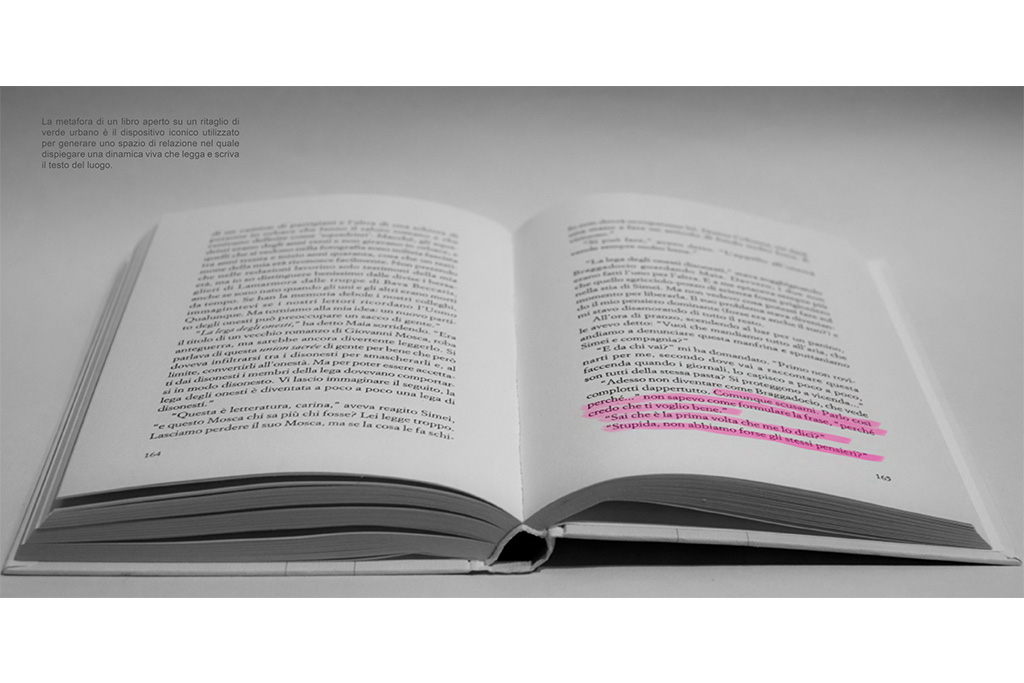
If the textus is the texture, the fabric, resulting from a set of elements (words) in mutual relationship to form a conceptual unit, its meaning in the context of the project takes on value at different scales of size: the existing context, which evolved according to a serial and systematic arrangement of buildings, consisting of regularly spaced volumes, suffers from the lack of a common reader, leaving each element, hygienically distant from the others, only in its relationship with the shared space.
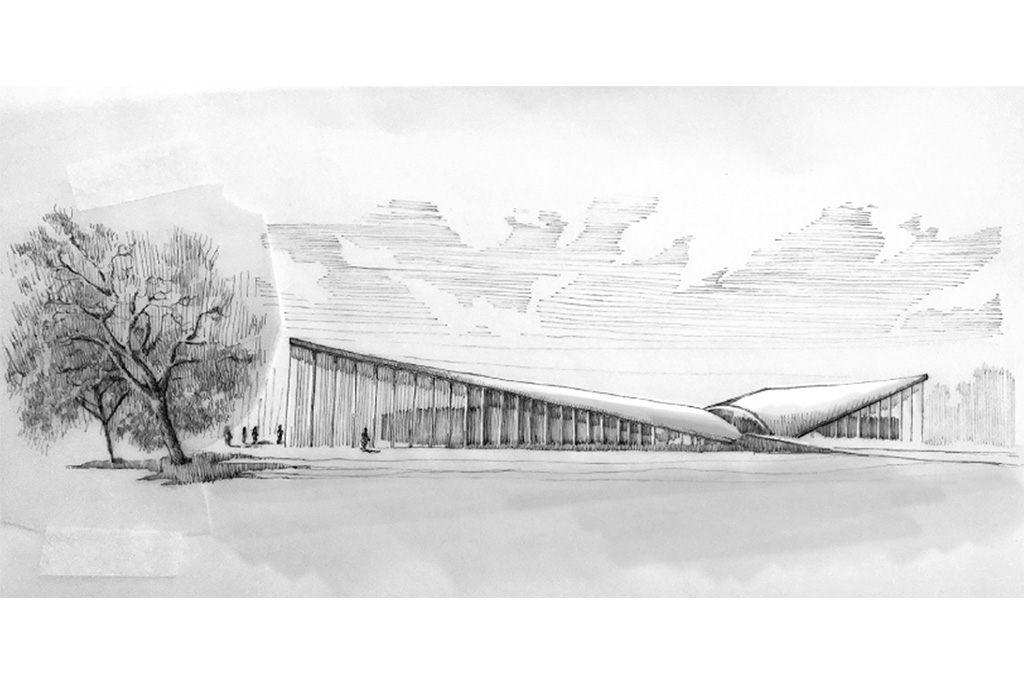
CREDITS
Location: MILANO
Project: MOSAE srl
Team: Michele Maddalo, Alice Brugnerotto
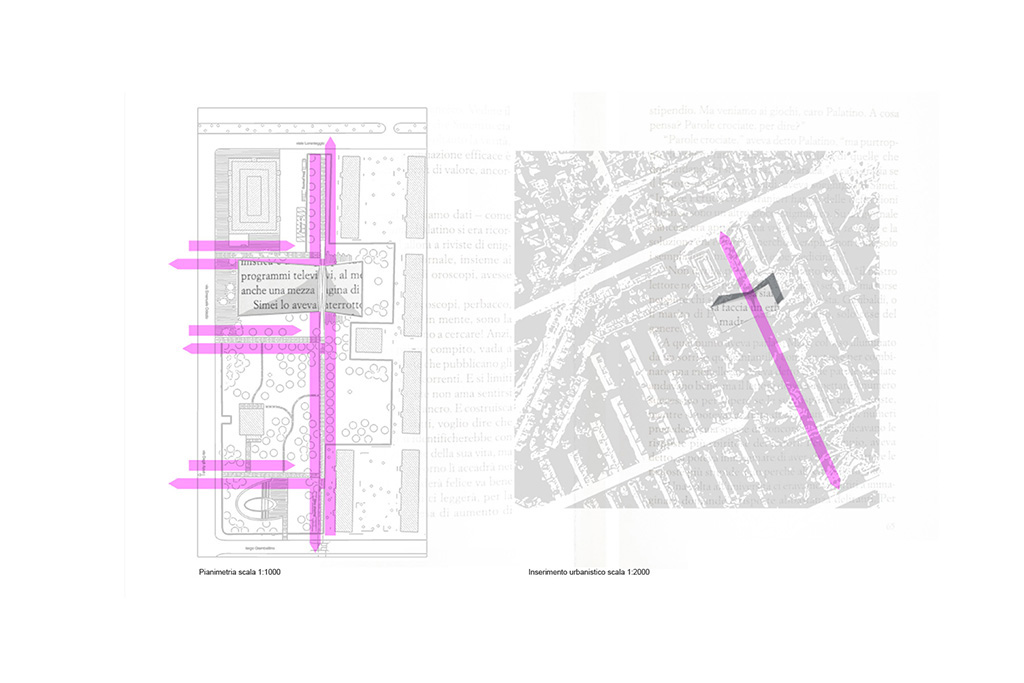
The new intervention has the objective of creating a unitary architectural object capable of placing itself in a proportionate dimensional relationship with the existing ones and of creating a semantic field that invests them by reinterpreting their meaning.
The existing intervention area undergoes the geometries of the surroundings without the ability to form itself in place and the internal paths do not determine any hierarchy of relationships between the various elements present in the area.
In the new project, the use of the main connection route, as a founding element and generator of the same architectural form of the building, characterizes the entire area, orienting all access and use perspectives.
The new building was born from a project program that interprets what emerged from the process of participation and local listening and is, thanks to its future use flexibility, a tool for the natural continuation of this path.
The morphology of the space is generated by the meeting between the external path (north-south axis) and the internal one (east-west axis) resolved in the continuity of the roof sheet curved towards the ground.
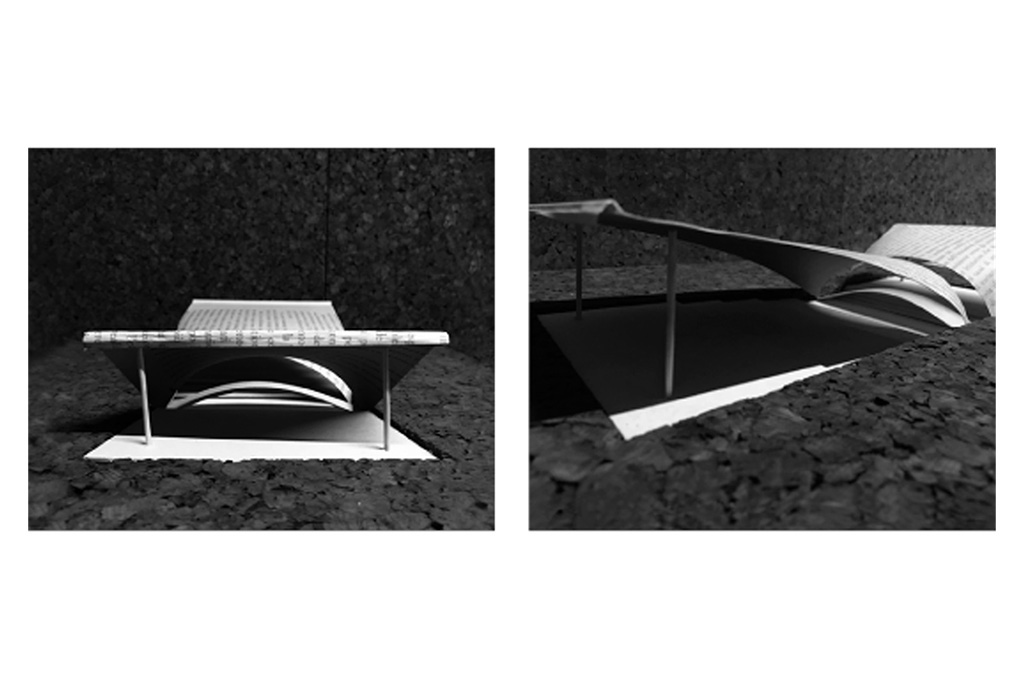
The intersection of the paths is the place where the relationship between exterior and interior is resolved and where the respective experiences can reverse their hierarchies in a continuous reference between reading and being read.
The main entrance of the public front on via Odazio leads into the atrium defined by the transversal volumes which on the ground floor contain part of the “reception-information” functions and the “reference section” while on the upper level there is the “music and entertainment section and new media” and the “youth space” as well as “internal services”.
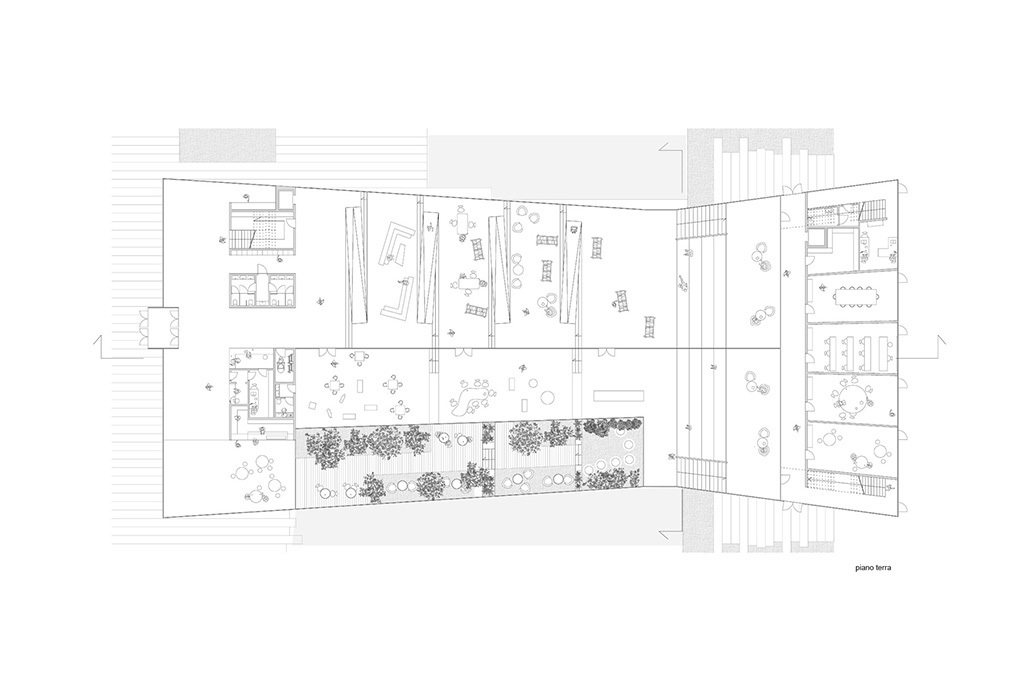
The central path allows access to the remaining part of the forum area, arranged on descending levels which welcome the remaining functions of the “entrance sector” in a full-height space. At the end of this promenade the narrative and “non-fiction area” is located below the external upper transverse passage from which it takes natural light. Parallel to these areas, the area dedicated to “children and teenagers family” develops, which is delimited by two glass walls and overlooks the internal greenhouse in turn in connection with the dining area.
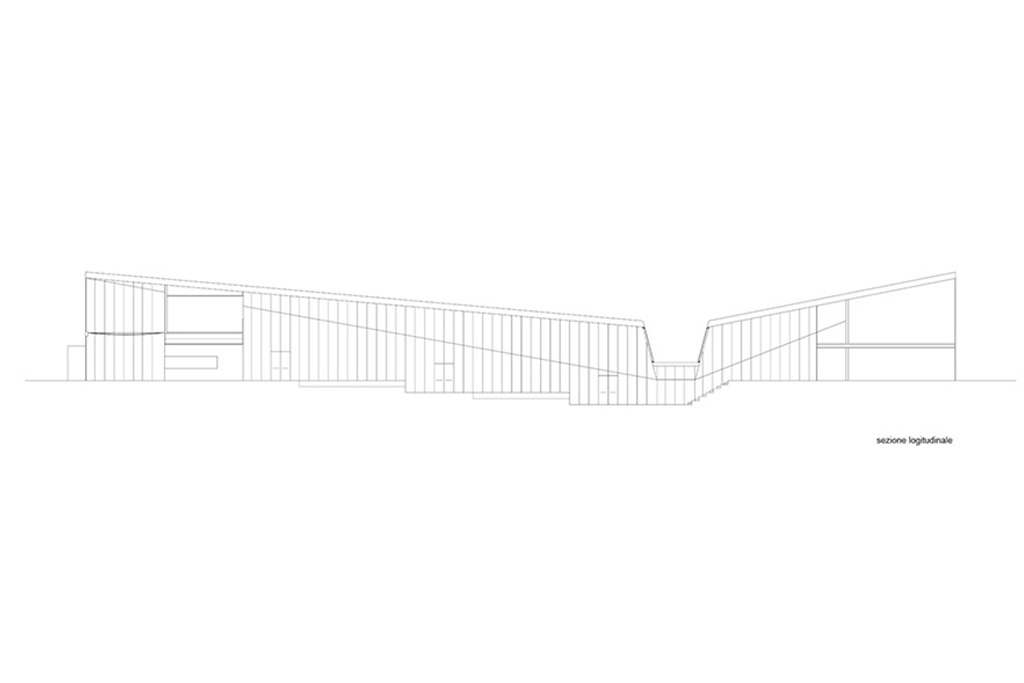
The east portion of the building, arranged on two levels of use, overlooks the external green area of relevance (possibly equipped with an external auditorium) and we can find the “lab area” and the “study rooms” on the upper floor. The technical rooms are located in the basement volume below these two levels.
The flight of steps between the “narrative and non-fiction area” and the “lab area” can be used as an internal amphitheater to be dedicated to the auditorium and allows to avoid that the study rooms have to be merged.
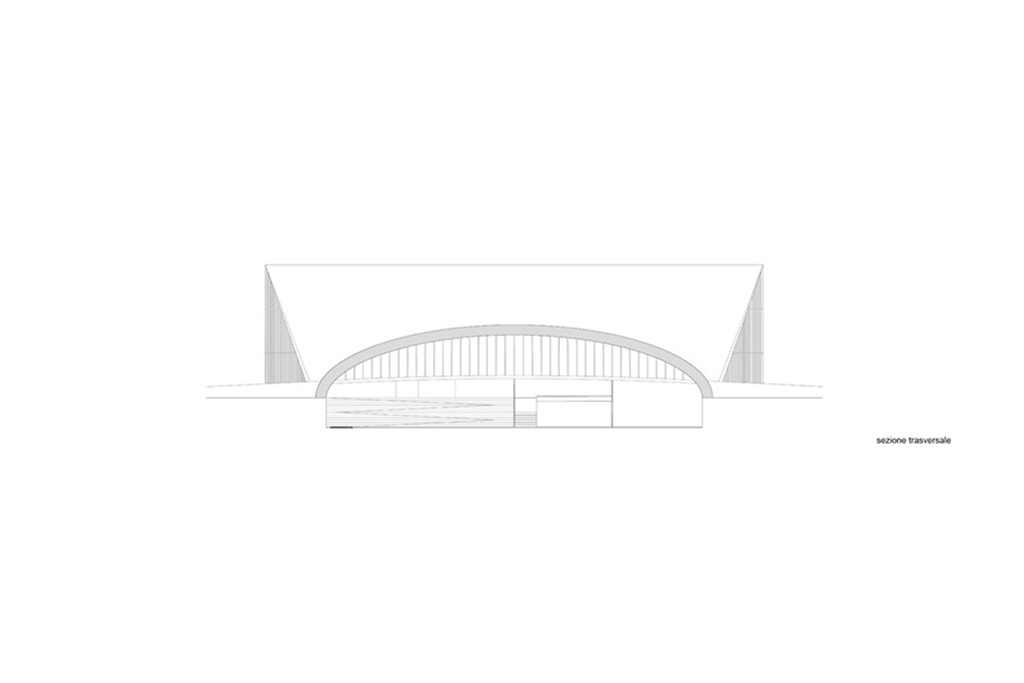
Independent accesses are guaranteed to offices and storage (on the north front) and to the “lab area” and to the “study rooms” (on the north and south front). Access to the external area of exclusive relevance to the east is guaranteed both from the outside and directly from the lower level of the building.
The technological element is integrated within the project in order to increase its energy performance and ensure the environmental sustainability of the construction process through the morphological solutions adopted (e.g. underground portions, greenhouse) and the choice of materials (e.g. .: curved beams in laminated wood, glazed facades).
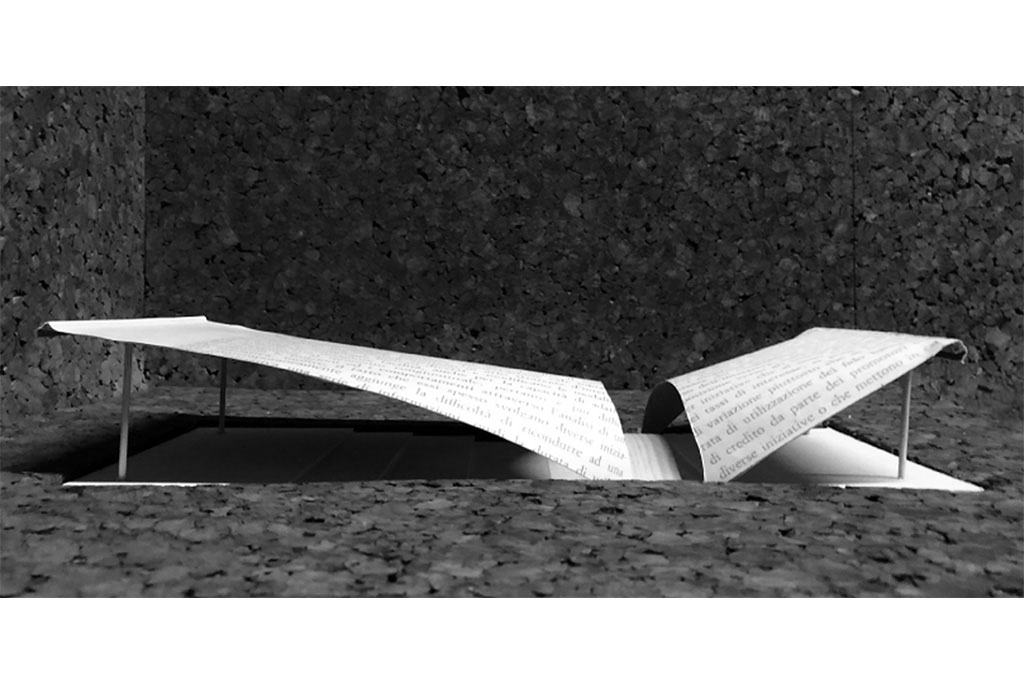
Finally, the formal choice adopted on the roof interprets the project program in a synthetic way by arranging a plot of photovoltaic cells with highly reflective to represent the idea of a written text and giving a dimension of the urban scale to the intervention.
Share
